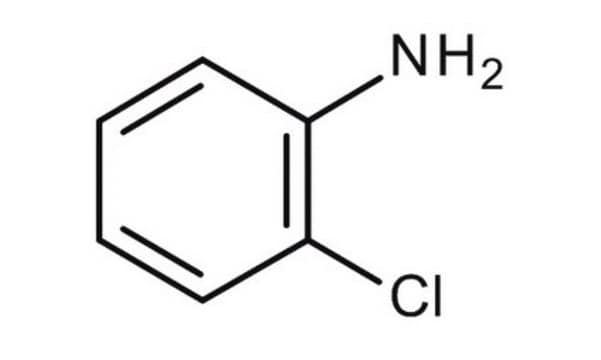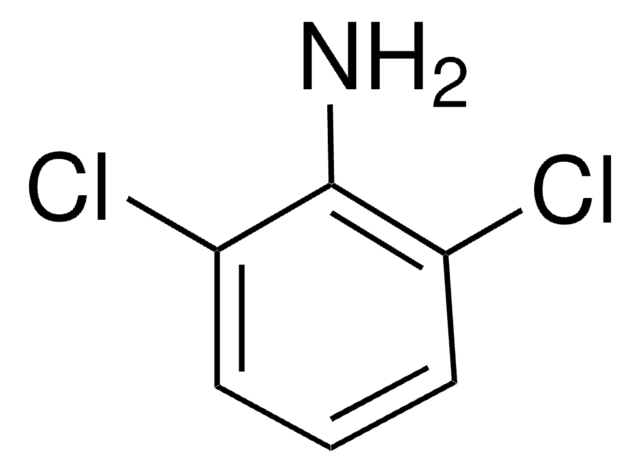23310
2-Chloroaniline
technical, ≥98.0% (GC)
About This Item
Polecane produkty
klasa czystości
technical
Poziom jakości
Próba
≥98.0% (GC)
Postać
liquid
współczynnik refrakcji
n20/D 1.588
tw
208-210 °C (lit.)
rozpuszczalność
water: soluble 5.13 g/L at 20 °C
gęstość
1.213 g/mL at 25 °C (lit.)
ciąg SMILES
Nc1ccccc1Cl
InChI
1S/C6H6ClN/c7-5-3-1-2-4-6(5)8/h1-4H,8H2
Klucz InChI
AKCRQHGQIJBRMN-UHFFFAOYSA-N
Szukasz podobnych produktów? Odwiedź Przewodnik dotyczący porównywania produktów
Opis ogólny
- 2-Chloroaniline is widely used in polymer, rubber, pharmaceutical and dye industries.
- Determination of 2-chloroaniline in polymer industrial wastewater has been examined using HPLC with on-line microdialysis.
- Degradation of 2-chloroaniline in water by ozonation as well as by photolysis (UV-light of 254 nm) and radiolysis (γ-rays) in the presence of ozone has been investigated.
Hasło ostrzegawcze
Danger
Zwroty wskazujące rodzaj zagrożenia
Zwroty wskazujące środki ostrożności
Klasyfikacja zagrożeń
Acute Tox. 3 Dermal - Acute Tox. 3 Inhalation - Acute Tox. 3 Oral - Aquatic Acute 1 - Aquatic Chronic 1 - Eye Irrit. 2 - Muta. 2 - STOT RE 2
Kod klasy składowania
6.1A - Combustible acute toxic Cat. 1 and 2 / very toxic hazardous materials
Klasa zagrożenia wodnego (WGK)
WGK 3
Temperatura zapłonu (°F)
221.0 °F - closed cup
Temperatura zapłonu (°C)
105 °C - closed cup
Choose from one of the most recent versions:
Masz już ten produkt?
Dokumenty związane z niedawno zakupionymi produktami zostały zamieszczone w Bibliotece dokumentów.
Klienci oglądali również te produkty
Nasz zespół naukowców ma doświadczenie we wszystkich obszarach badań, w tym w naukach przyrodniczych, materiałoznawstwie, syntezie chemicznej, chromatografii, analityce i wielu innych dziedzinach.
Skontaktuj się z zespołem ds. pomocy technicznej



















